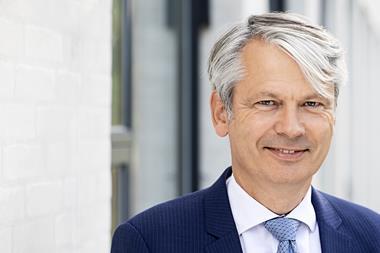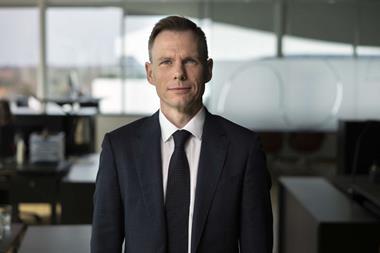Denmark’s statutory pensions giant ATP this morning reported eye-watering investment losses for the third quarter of this year, that – coupled with the devaluation of its bond-based hedging portfolio due to rising interest rates – could be closing its size lead over the country’s second biggest pension fund.
After two quarters of heavy losses, the pension fund’s investment portfolio, which consists of its bonus potential, suffered a 13% loss in the third quarter alone according to IPE’s calculation, and the pension fund stated the total investment loss from January to September as 45.2%.
Total assets, meanwhile – bonus potential plus hedging portfolio – shrank by 7.6% between July and September to DKK676.9bn (€91bn) from DKK732.6bn, according to the report released today for the first three quarters of 2022. Since the beginning of the year, ATP’s total assets have lost about 29% of their value.
Martin Præstegaard, ATP’s chief executive officer, said: “We are in an extreme situation.”
Europe, he said, was being hard hit on multiple fronts – sky-high energy prices, an inflation shock, dramatic capital losses in the equity markets and rising interest rates.
“When interest rates rise as quickly as they have in 2022, this gives a very negative investment result,” said the CEO who was promoted to the top role at ATP this summer.
“It has been going well for many years, but now everything is turned upside down and we can clearly feel that,” he said.
Denmark’s second-biggest pension fund, the commercial mutual provider PFA, has yet to report its third quarter results, but at the end of June, it reported total assets amounted to DKK708bn, having shrunk from DKK725bn at the end of 2021.
While PFA and ATP are very different types of pension institution, PFA’s assets under management (AUM) have been declining at a slower rate this year so far than has ATP’s asset total.
Præstegaard said ATP’s most important task was to be able to pay the pensions it had promised its members, no matter how markets developed.
“Even though we have had major losses so far in 2022, our hedging strategy ensures that we can always pay what we have guaranteed,” he said.
The pension fund said the importance of the guarantees was growing, and that for about 40% of members of the first-pillar population-wide scheme, ATP Livslang Pension (Lifelong Pension) was their only pension beyond the state pension.
ATP said the investment portfolio made a negative return of DKK72.8bn in the first three quarters, saying that particularly government and mortgage bonds and listed Danish and international equities had pulled the result down, while investments in inflation-related instruments made positive contributions to the return.
This year, ATP’s new business model has come into effect, involving the addition of a third portfolio – a special market-return portfolio – which aims to achieve higher returns on a proportion of the contributions of members with more than 15 years to go until retirement.
However, that new portfolio suffered a DKK100m loss in the nine months to September “due to general market developments,” ATP said.
The value of ATP’s guaranteed pensions, which the hedging portfolio is designed to cover, declined to DKK581.7bn at the end of September from DKK787.8bn at the end of last year, according to the new figures published.
Read the digital edition of IPE’s latest magazine




















No comments yet